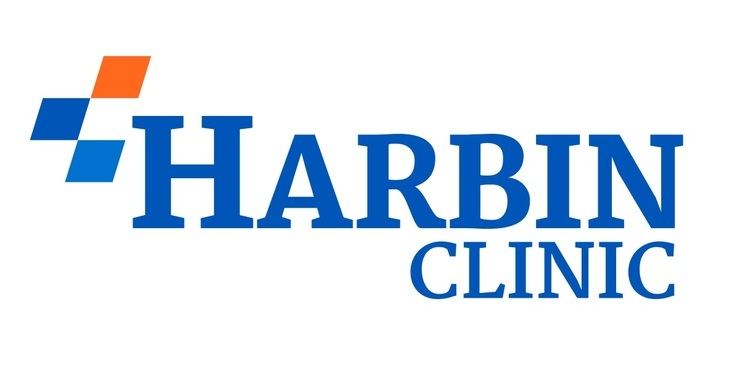CEO Kenna Stock Headquarters Rome Founded 1908 | Industry Healthcare President Kenneth F. Davis COO Wendy Pitts CFO Tom Diehl | |
 | ||
Founder Drs. W.P. and R.M. Harbin Area served Alabama, Georgia, Tennessee Chief medical officer Charles Edward McBride III Profiles | ||
Introduction to harbin clinic cancer center
With more than 140 doctors specializing in 35 different medical specialties, the Harbin Clinic is the largest privately owned multispecialty medical clinic in Georgia, and is a significant part of Rome, Georgia's dominance in the field of healthcare in the triangular area between Chattanooga, Tennessee, Birmingham, Alabama, and Atlanta, Georgia.
Contents
- Introduction to harbin clinic cancer center
- Meet dr maxwell prempeh harbin clinic interventional cardiologist in cartersville ga
- History
- Departments
- References
The Harbin Clinic was founded in 1948 as the successor to the Harbin Hospital that was founded in 1908 by Drs. W.P. and R.M. Harbin. The Harbin Clinic now has more than 27 satellite offices throughout Rome, Adairsville, Bremen, Calhoun, Cartersville, Cedartown, Summerville, and Trion.
Meet dr maxwell prempeh harbin clinic interventional cardiologist in cartersville ga
History
Dr. Robert Maxwell Harbin (1864–1939) received his medical training at Bellevue Hospital Medical College of New York City, and first practiced medicine with his father, Dr. Wylie Reeder Harbin, in Calhoun, Georgia in 1888. In 1894, Robert moved to Rome, Georgia and established his own practice.
Dr. William Pickens Harbin (1872–1942) ("Dr. Will"), earned his Medical Doctorate in 1897, also from the Bellevue Hospital Medical College. His brother Robert invited him to join his practice in Rome, where Will first arrived in 1898. However, Will soon accepted a commission as acting assistant surgeon in the United States Army during the Spanish–American War.
After the war, in 1901, Will returned to Rome and the Harbin brothers' first practice was located on the second floor at 206 Broad Street, and they employed two horse & buggy drivers to keep buggies ready to race the doctors to the homes of patients with medical emergencies. The fee for an office visit was usually $1, and the fees for home visits were $2 to $3, but payments were often delayed until the cotton crops came in. Common health problems included smallpox, diphtheria, typhoid, pellagra, tuberculosis and diabetes, with diagnosis depending on active symptoms, physical findings, and sputum examinations.
In 1908, Robert and Will founded the Harbin Hospital with 12 beds by converting a house at the Southeastern corner of Third Avenue and First Street. In 1911 they established a training program for nurses, and in 1919, a new four-story fire-proof hospital building was constructed next door, and the original hospital was converted to a nurses' dormitory.
Also in 1919, Harbin Hospital acquired an X-Ray machine and became one of the first hospitals in the country to offer radiation treatment for cancer.
In 1920, three stories were added to the hospital, expanding the bed capacity to 75 and making it the tallest building in Rome at the time. Many modern advances were included, such as steam heating, electrical lights, silent call systems, hot and cold running water in each room, linoleum floors, three complete operating suites, a private telephone exchange, and a safe-gate elevator running from basement to roof. The next year, the hospital was recognized by the American College of Surgeons as one of only four hospitals in Georgia to meet the board's standards of excellence.
In 1925, the Harbin Hospital introduced what was then an innovative orthopedic program of following the treatment of bone fractures with physiotherapy (known today as physical therapy). Other innovations in following years included Dr. Will Harbin performing the first Caesarean section ever done in Floyd County, the first blood matching and blood transfusion in the county, and the first X-ray camera in Rome used for the first bone and dental films.
By the time Robert died in 1939 and buried in Myrtle Hill Cemetery, many other physicians had been added to the staff, and in the 1930s and 40's, a new generation of Harbin doctors joined, including Robert Jr. and 3 sons of Will: William Jr., Bannester, and Thomas. William died in 1942 and also buried in Myrtle Hill Cemetery.
In 1948, Harbin Hospital was transformed into the Harbin Clinic by eliminating overnight care, which was effectively replaced by the expansion of the Floyd County Hospital to 120 beds. At this time the building was renovated and an air-conditioning system was added, the Harbin Hospital School of Nursing was terminated, and the nurses' dormitory was razed to increase parking space.
The next major change came in 1969, when the medical group purchased 8 acres (32,000 m2) from Berry College on the Southwest corner of Martha Berry Boulevard and Redmond Road, and built a new facility with 34,000 square feet (3,200 m2) of office space for a staff of 20 doctors, a dentist, and a pharmacy.
Since then the Harbin Clinic has continued to expand, and is Georgia’s largest privately owned, multi-specialty physician clinic, with an 11-county referral base consisting of Bartow, Chattooga, Cherokee, Floyd, Gordon, Haralson, Polk, Walker, and Paulding counties in Georgia and Cherokee and DeKalb counties in Alabama. The clinic also has more than 20 satellite offices are throughout Rome, Calhoun, Cartersville, Cedartown, Adairsville, Summerville and Bremen.
Harbin Clinic was affiliated with PhyCor, Inc, a medical management company based in Nashville, TN from 1996 to 2000. Upon PhyCor's reorganization, Harbin repurchased its assets and regained its independent status.
Departments
The comprehensive nature of care available at the Harbin Clinic is evidenced by the long list of departments within the Clinic:
